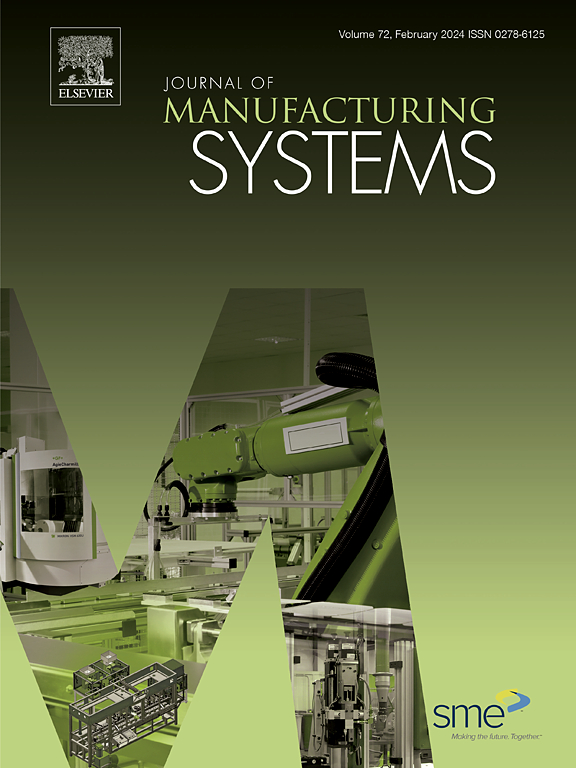A multimodal hierarchical learning approach for virtual metrology in semiconductor manufacturing
IF 12.2
1区 工程技术
Q1 ENGINEERING, INDUSTRIAL
引用次数: 0
Abstract
Achieving high-precision wafer yield prediction is a crucial step in improving the quality of semiconductor manufacturing. However, existing methods overlook the multimodal characteristics in wafer fabrication, leading to limitations in prediction accuracy and interpretability. To address the problem, this paper proposes an adaptive modal division and hierarchical learning method for wafer yield prediction. Firstly, Bayesian optimization is employed to adaptively search for the optimal modal division locations in the training samples, categorizing the samples into three distinct yield groups (high, medium, and low) with explicit production relevance. Concurrently, a novel degradation and incremental learning mechanism is designed to address the problem of declining prediction accuracy due to sample imbalance. Subsequently, a classification-regression hierarchical learning architecture is established to separately learn the distribution characteristics of each modality. This involves training classifiers using the labels derived from modal division, followed by distinct regressors for each category to facilitate precise yield predictions. Finally, experimental validations based on simulation and real-world manufacturing data demonstrate that the proposed virtual metrology approach accounting for multimodal characteristics exhibits enhanced performance and robustness.
半导体制造中虚拟计量的多模态分层学习方法
实现高精度晶圆良率预测是提高半导体制造质量的关键一步。然而,现有的方法忽略了晶圆制造中的多模态特征,导致预测精度和可解释性受到限制。为了解决这一问题,本文提出了一种自适应模态划分和分层学习的晶圆产量预测方法。首先,利用贝叶斯优化自适应搜索训练样本中的最优模态划分位置,将样本划分为具有明确生产相关性的高、中、低三个不同产量组;同时,设计了一种新的退化和增量学习机制来解决由于样本不平衡导致的预测精度下降的问题。然后,建立分类回归分层学习体系,分别学习各模态的分布特征。这包括使用模态划分衍生的标签来训练分类器,然后为每个类别使用不同的回归器来促进精确的产量预测。最后,基于仿真和真实制造数据的实验验证表明,考虑多模态特性的虚拟计量方法具有增强的性能和鲁棒性。
本文章由计算机程序翻译,如有差异,请以英文原文为准。
求助全文
约1分钟内获得全文
求助全文
来源期刊

Journal of Manufacturing Systems
工程技术-工程:工业
CiteScore
23.30
自引率
13.20%
发文量
216
审稿时长
25 days
期刊介绍:
The Journal of Manufacturing Systems is dedicated to showcasing cutting-edge fundamental and applied research in manufacturing at the systems level. Encompassing products, equipment, people, information, control, and support functions, manufacturing systems play a pivotal role in the economical and competitive development, production, delivery, and total lifecycle of products, meeting market and societal needs.
With a commitment to publishing archival scholarly literature, the journal strives to advance the state of the art in manufacturing systems and foster innovation in crafting efficient, robust, and sustainable manufacturing systems. The focus extends from equipment-level considerations to the broader scope of the extended enterprise. The Journal welcomes research addressing challenges across various scales, including nano, micro, and macro-scale manufacturing, and spanning diverse sectors such as aerospace, automotive, energy, and medical device manufacturing.
 求助内容:
求助内容: 应助结果提醒方式:
应助结果提醒方式:


